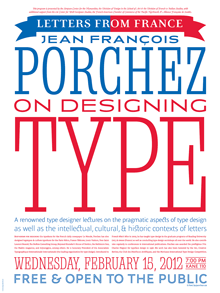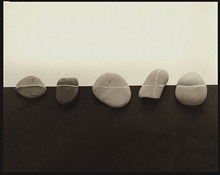If you’re in Seattle in mid-February, you might want to come to one of these events to hear and meet Jean François Porchez, who is probably the most widely-known French type designer today. JFP will be giving a free talk on Wednesday, February 15 at Kane Hall at the University of Washington, as part of a week-long symposium: “Letters From France: On Designing Type.” He will also be speaking the following day at the Good Shepherd Center (4649 Sunnyside Avenue North, Seattle), with a Q&A session in both French and English. And I hope to entice him to our monthly typographers’ pub, on the second Tuesday, which will be February 14 (yes, Valentine’s Day), at the Pub at Third Place (6504 20th Avenue NE, Seattle), from 8 p.m. on; anyone interested in type is welcome. (Look for the table full of obvious typographers.) A bientôt!
[Update:] Videotape of Porchez’s talk at Kane Hall is available online. Below, a very poor snapshot of JFP (L) at the type pub, looking over sketches of a type design by Andrea Harrison (R).



